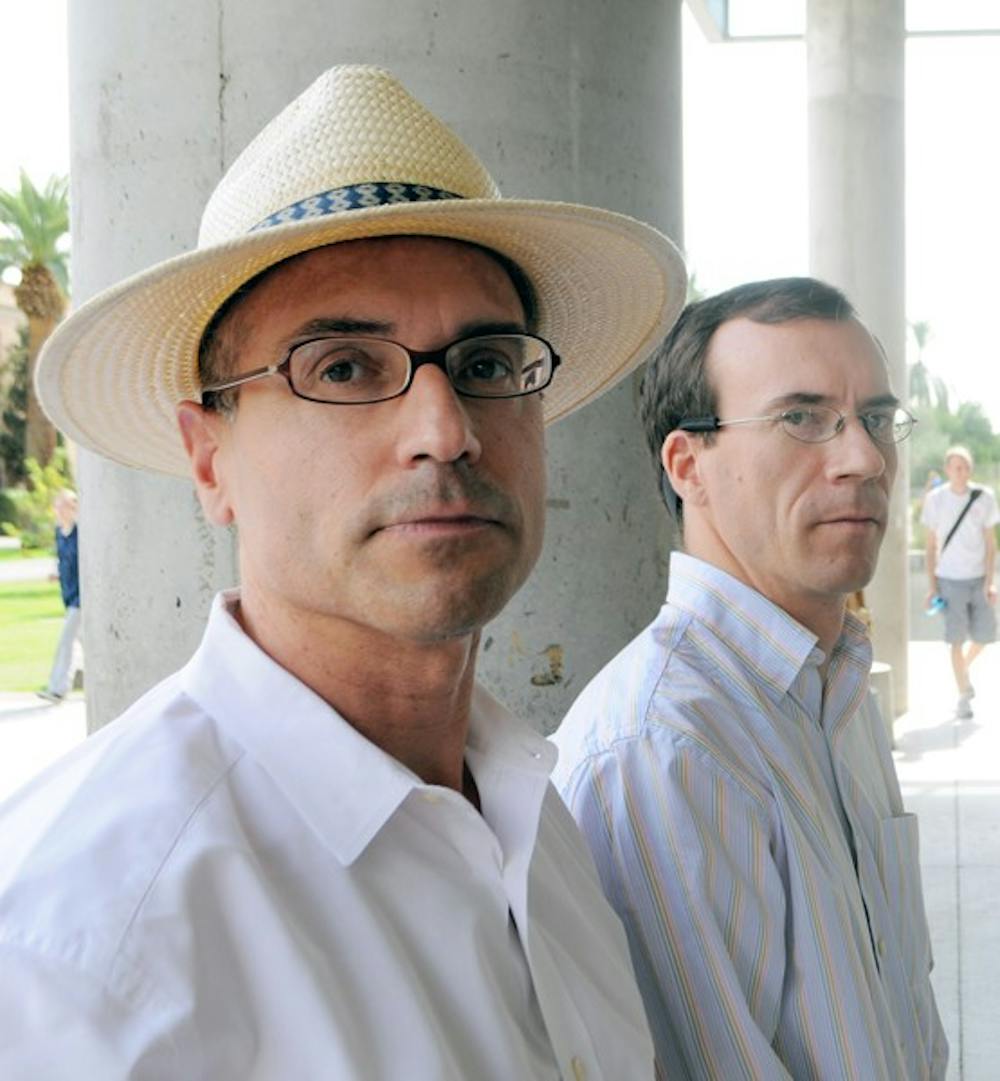In times of disaster, normality and order are sought in order to restore the calm. In the case of the Jan. 12, 2010 earthquake that left Haiti in a state of tragedy and disrepair, it was through expressions of art that Haitian citizens began and continue to recover.
Two ASU professors traveled to Haiti on the first-year anniversary of the disaster to explore and observe the rebuilding process as part of their project “The Art of Recovery,” examining the role art plays in the lives of Haitians.
Thomas Puleo of the School of Politics and Global Studies and Markus Cruse of the School of International Letters and Cultures spoke about their trip and project in a lecture at the Tempe History Museum on Oct. 20.
Cruse is currently putting together a class to be available next fall about Haitian history, culture, arts and the responses to the earthquake.
“It is important to know about Haiti because Haiti has been integral to American history,” Cruse said. “We have had, for 200 years, a close connection to this country in ways both positive and negative.”
Puleo and Cruse plan to return to Haiti in 2012 to make further observations and conduct interviews with citizens. They said they would like to get ASU students involved in humanitarian organizations that travel to Haiti.
“Students will learn much more from the Haitians and benefit from them but it will be an equal exchange,” Puleo said. “They should go over there and be open to understanding Haiti on Haitian terms.”
Cruse said a common misconception is the American view of Haiti as a failed state. Their project emphasizes viewing the recovery process through the lens of Haitian expectations.
Graduate student Christa Brelsford was volunteering in Haiti at the time of the earthquake. The home she was in collapsed, trapping her under two stories of rubble. Though her life was spared, her right leg had to be amputated below the knee.
Brelsford started Christa’s Angels, a relief organization, to aid the Haitians who helped save her life.
She said America showed great initial response to the recovery efforts in Haiti but the long-term recovery is still a challenge.
“One thing I do think is important is to figure out how to help the Haitians help Haiti,” she said. “As long as we continue to do so, we can make a difference.”
Brelsford’s experience inspired a special topics class last year taught by professor Maria Cruz-Torres from the School of Transborder Studies.
“I think ASU students should learn more about the history and culture of Haiti and they should become more aware of the issues affecting the lives of the Haitian people,” Cruz-Torres said in an email.
Cruz-Torres said the Haitian people are very resilient and their heritage and national pride has helped them persevere in spite of the disaster.
Through literature, street art and graffiti, Haitians were able to create routine and a sense of familiarity among the rubble, Puleo said.
Cruse said “The Art of Recovery” studies the Haitian response to the earthquake though the use of art, architecture, music, literature and cultural practices.
“As a literature professor, I am particularly interested in the way Haitian writers have responded to the earthquake,” he said.
Puleo said it struck him how devastated the cities and villages were following the earthquake. He said it is human instinct to use art as a form of therapy when dealing with catastrophes.
“Instinctively, they had to do something to help restore some kind of sense of well being,” he said.
At the lecture, Puleo and Cruse shared images from their trip of the ruin and damage to the buildings. The capital building is the country’s prized building and its destruction caused great distress among citizens, Puleo said.
“Imagine the White House or some other capital building of meaning being destroyed like this,” Puleo said. “It was just terrible.”
Puleo said he is interested to see how the recovery process continues.
“We would like to see how things actually change,” he said. “What has to happen is for all the rubble to be removed and there are still a lot of legal and strategic challenges to that.”
Reach the reporter at newlin.tillotson@asu.edu
Click here to subscribe to the daily State Press newsletter.





